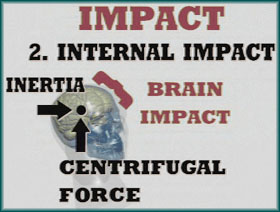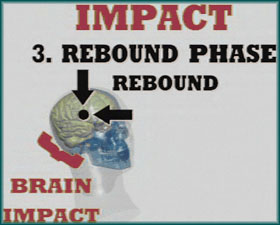Head Impact Biomechanics and Brain Injury
When we talk about head impact biomechanics, they could be the result of the head coming in contact with another object or person, or not actually coming in contact with anything. What is meant by not coming in contact with anything is the action that happens in the acceleration/deceleration type of head impact biomechanics. This happens often in accidents that involve a motor or moving vehicle. Auto accidents are best known for these kind of head impact biomechanics. If the vehicle is moving at a regular rate of speed and then suddenly comes to a halting stop, the head will not stop and the backwards and forward motion of the head can actually cause brain injury.
Even though the head has not come in contact anything or nothing has come in contact with the head, the brain can come in contact with its own skull. Thus there is impact but not a noticeable to the eye type of impact that will cause cuts, scrapes or even an indention. The skulls main purpose is to protect the brain from foreign objects. In this case it becomes the foreign object to the brain. But obviously with out the skull the brain would suffer much worse damage if it did not have it there for protection.
This could easily be missed in the Emergency Room because they are focusing on other injuries at the time. Because of this brain injury often goes undiagnosed. The proper tests to detect brain injury and if there is no loss of consciousness it could be assumed that there wasn’t any brain damage.
These next three graphics were developed to illustrate the biomechanical calculations involved in a head impact biomechanics.

Rapid Head Motion

